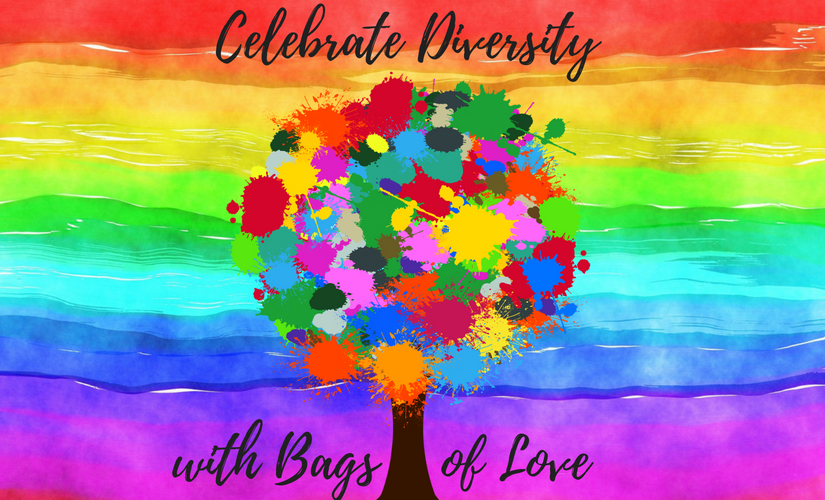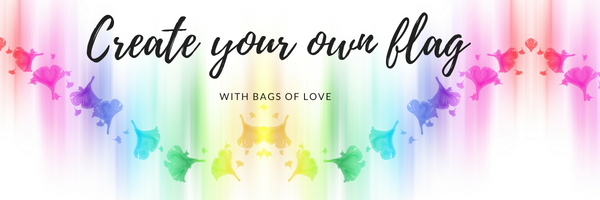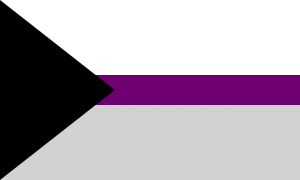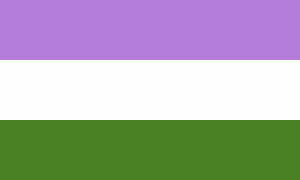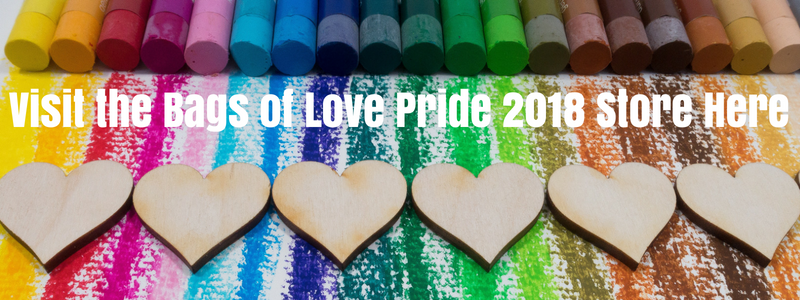In addition to the traditional Rainbow Pride flag, there are so many flags. There are many logos too. Each symbolises something different. You are likely to come across much of this diversity during your Pride festivities. So much, in fact that it can sometimes feel a little overwhelming. Especially if you aren’t sure what colours or flags represent which community. To make things easier, and get you Pride 2018 ready, we have created a flags mini-series of blog posts. These explore a variety of flags and symbols. While each relates to different communities, identities and sexualities, they’re all Pride related. For the flags encompassed in the LGBT initials, take a look at our LGBT Flags bog post. Our Pride Flag 101 blog post gives you a history of the versions of the Rainbow Pride Flag.
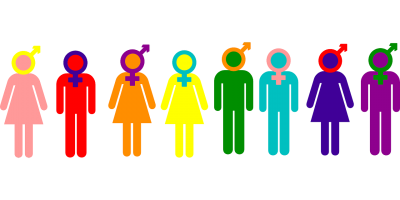
We explored this diversity in great depth. In conclusion we put together a handy guide to help identify ‘big contenders’. Each flag represents a different sexual orientation, gender identity, and much more. Due to this we haven’t been able to gather them all. We decided to put together a handy guide to celebrating and supporting diversity. We’ve included it as part of our flag mini-series of posts. It contains almost all the main flags you may come across.
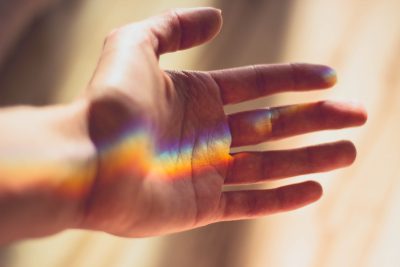
Each flag offers great diversity within itself. As a result, throughout the range you can see common themes between many of them. Some flags use the same colours as others. Some flags have a range of colours yet some use very few. Featured flags are all available in our Pride 2018 store. Remember – if we don’t have the flag you’re looking for, maybe you’d like to create your own using our online flag design tool!
Celebrate Diversity Flag Guide
Pansexuality
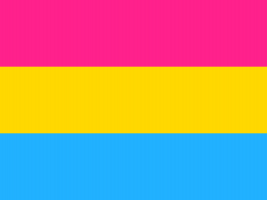
Many people confuse bisexuality and pansexuality. The Pansexual Pride Flag was designed to help distinguish it from bisexuality. Found online since 2010, it is increasing in popularity. Pansexuality is the attraction towards people regardless of their gender identity. As a result this can be either romantic or sexual attraction.
This flag features three stripes, equal in size. The pink stripe represents those that identify within the female spectrum. While the blue covers those that identify within the male spectrum. Both of these are how someone identifies, regardless of biological sex. The yellow middle section represents non-binary. This could be androgynous, agender, bigender and gender fluid.
Intersex
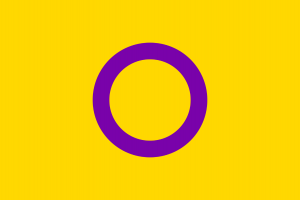
Some people don’t exhibit all the biological male or female characteristics at birth. Some have a combination of both. These people are known as being intersex. An estimated 0.05 to 1.7% of the population have intersex traits.
An intersex organisation in Australia created the Intersex Pride Flag in 2013. They designed it to have no gender specific colours. As a result, their aim was to have a flag that was not derivative but was grounded in meaning. It is one of the only flags that doesn’t feature stripes. Instead, a purple circle is centrally places on a yellow background.
Asexuality
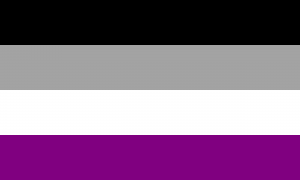
Asexuality is the lack of sexual attraction to others, or little to no desire for sexual activity. The term asexuality refers to sexual attraction itself, not romantic attraction. Therefore, some who identify as asexual may engage in romantic relationships. Yet others may not.
The Asexual Pride Flag has four horizontal stripes. Created by AVEN (Asexual Visibility and Education Network) in August 2010. It firstly features a black stripe for asexuality. Followed by a grey stripe to signify the grey area between sexual and asexual. This is in reference to grey-sexuals. This covers those who rarely experience sexual attraction. Including those who find it at such a low intensity it’s ignorable. A white stripe is then shown, representing sexuality. The same purple stripe as many other flags symbolises community.
Demi-Sexuality
Demi-sexuals only experience sexual attraction if they have formed an connection with someone. This is often an emotional connection. Asexual people do not experience sexual attraction, and grey-asexuals only very occasionally do. However demi-sexual people do not have any lack of libido. They do experience sexual attraction yet only once a bond forms. Demi-sexuals can have any romantic orientation.
The Demi-Sexual Pride Flag has a distinctive appearance. It uses different proportions, yet the same colour scheme as the asexuality flag. Although it shows stripes, it also has a triangle that sits on the left. As a result, the stripes don’t draw the main focus. The white represents sexuality and the grey represents grey-sexuality. While again, community is signified by purple. In addition, black shows asexuality. Referring to that which occurs before building that trusting bond.
Polysexuality
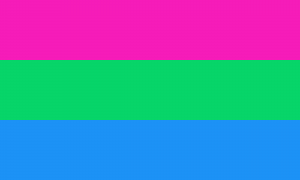
Polysexuality is the sexual attraction to multiple, but not all, genders. It differs from bisexuality with is the attraction towards all binary genders. It also differs from pansexuality, the attraction regardless of gender – binary or non-binary.
The Polysexual Pride Flag was created by a Tumblr user in 2012. They declared: “I, as a poly individual, was greatly saddened by the fact that we don’t have a flag…so I made one. 😛 I made it similar to the bi and pan flags, since they’re all in under the multisexual umbrella. -Samlin”. It is another flag which displays three horizontal stripes, all of which are equally sized.
Genderqueer, Non-Binary and Genderfluid
Genderqueer is a term used as a catch-all for gender identities outside of the gender binary. The binary classifies sex/gender into two forms, masculine and feminine. Consequently, genderqueer refers to either genderfluid or non-binary.
Genderqueer people may choose to express a combination of both masculinity and femininity. Or they may choose to express neither. They may identify as having two or more genders, or none at all. A genderqueer person can have any sexual orientation.
Created in 2011, the Genderqueer Pride Flag displays three stripes. A lavender one to represent androgyny or queerness. A white stripe to represent agender identity. In addition, showing green for those whose identities are outside the binary.
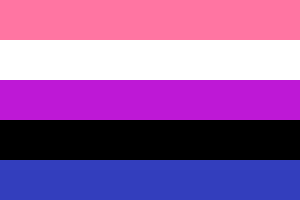
The Genderfluid Pride Flag features five horizontal stripes. A pink stripe for femininity and a blue stripe for masculinity. It also shows white for lack of gender. The purple is for androgyny. Finally the black, for all other genders.
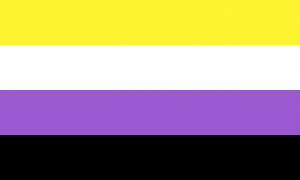
The Non-Binary Pride Flag was created in 2014. Featuring four horizontal stripes of different colours. Yellow represents people whose gender exists outside the binary. Followed by white for those who embrace many, or all the genders at once. Then showing a purple stripe for those who feel their gender identity is a mix of both male and female. Including if they feel as though it is between the two. Finally, a black stripe signifies those who feel they have no gender.
Flag of Flags
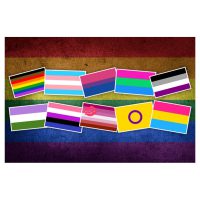
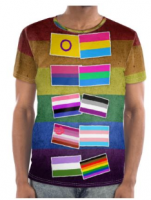
To celebrate the diversity within the LGBTQ+ community, we created a flag of flags. While it doesn’t contain all the flags featured in our flag mini-series of blog posts, it has a lot of them. You can use our online flag creator to create your own flag montage, and you can even put it on a t-shirt like we did. Or a bag, or a purse, or a towel. What we are trying to say is you can put your design on pretty much anything you’d like. Our Pride 2018 shop has a variety of products that have been designed by our specialist team, if you don’t fancy creating your own.

